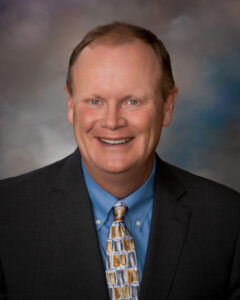Community banking experts say the industry remains strong in the wake of the failures of Silicon Valley Bank and Signature Bank.
Regulators shuttered the $210 billion, California-based tech startup-focused Silicon Valley Bank on March 10. On March 12, the New York Department of Financial Institutions closed the $110 billion Signature Bank after the New York City-based commercial bank and major lender to the crypto industry faced a crisis in confidence triggered by the SVB failure. That same week, a group of 11 of the largest U.S. banks attempted to shore up troubled San Francisco-based First Republic Bank, depositing $30 billion into the bank. The infusion wasn’t enough to save the embattled San Francisco-based bank, which focused on serving affluent customers. After customers withdrew $100 billion in the wake of the SVB and Signature Bank failures, the $230 billion First Republic officially failed May 1, and was acquired by New York City-based JPMorgan Chase. The bank was the second-largest to fail in U.S. history, behind only the $307 billion Washington Mutual in 2008.
Some experts attribute the failures to Federal Reserve policy. Jeff Caughron, a senior partner at Oklahoma City-based securities firm The Baker Group, said the Fed’s decision to raise interest rates by 475 basis points over the last year played a role in the collapses. “Unlike traditional community banks, SVB had very little funding from sticky core deposits or solid legacy retail accounts,” he noted. “Instead, they relied on volatile liabilities from high-risk commercial accounts and very rate-sensitive funding.”
Silicon Valley Bank’s collapse was partially caused by its overreliance on long-term Treasuries. As the Federal Reserve raised interest rates, the bank sustained heavy financial losses as they sold assets at a steep discount to their initial purchase prices. Kasasa CEO Gabe Krajicek expects other banks with exposure to long-term Treasury bonds will continue to have unrecognized market losses as the Fed hikes interest rates to combat inflation.

Krajicek sees compressed net interest margins as another pressing issue as bank balance sheet yields remain between 3 and 4 percent while cost-of-funding margins are at least 5 percent. He advised banks to reassure their depositors of their financial strength and grow core deposits, whether through high-yield checking or savings accounts.
Following the collapses, the FDIC lifted its $250,000 insurance limit on deposits for customers at Silicon Valley and Signature to prevent runs at other banks. The Federal Reserve also provided easier terms on short-term loans taken by cash-strapped banks. Treasury Secretary Janet Yellen has said the government is willing to expand FDIC insurance to regional and community banks in distress.
Congress and bank regulators are indicating that new rules are on the horizon. Federal Reserve Vice Chair for Supervision Michael Barr said in late March that the Fed will propose long-term debt requirements for large banks deemed not systemically important to the global financial system. He attributed the failures to bank managers relying on over-concentrated business models and not effectively managing interest rate and liquidity risks.
“We will need to enhance our stress testing with multiple scenarios so that it captures a wider range of risk and uncovers channels for contagion,” he said in testimony before the Senate Banking Committee. “We must also explore changes to our liquidity rules and other reforms to improve the resiliency of the financial system.”
United Bankers’ Bank President Dwight Larsen said regulators could stiffen liquidity ratio requirements in the wake of the failures. The quick regulatory response is ensuring the banking system is stable and should give community banks confidence that no significant downturn is looming, said Karen Grandstrand, chair of the bank and finance group at Minneapolis-based Fredrikson & Byron.

Larsen said the long-term impacts of the failures remain unknown. In the weeks following the collapses, more community banks tested their access to the Federal Funds line. He noted that UBB-member banks have not experienced liquidity drops and have avoided a deposit exodus from small business customers. “We do not see this as a system-wide crisis,” he added.
Small and mid-sized banks are recovering some of the $109 billion in deposits they lost immediately following the failures. According to an April 7 report, deposits at small banks increased by roughly $25 billion to approximately $5.371 trillion the week of March 29 from $5.345 trillion the previous week. Deposits at large banks increased by nearly $50 billion to $10.748 trillion. Deposits at all commercial banks increased by approximately $150 billion the week of March 29 to $16.119 trillion.
RSM US Principal and Chief Economist Joseph Brusuelas said the shift occurred “because deposits at systemically-important financial institutions have the implicit backing of the federal government — recall the financial crisis — and those at the regional and community banks do not.
“In our estimation, this puts at risk the deposits of millions of U.S. households and the small and medium-sized firms that employ them,” Brusuelas said.
Brusuelas said the federal government should explicitly guarantee to cover deposits for both U.S. households and banks. He supports a “public-good model” for banking, which would require additional regulation for all banks along with stress tests to assess balance sheet exposure to interest rate risk and an economic downturn.
“Concerns of moral hazard that would be raised with the expansion of deposit insurance deserve further consideration, as does its cost,” he added. “But the structural changes in the economy over the past two decades have outrun the framework that was stitched together after the Great Financial Crisis. The status quo is untenable for small and midsize banks.”
Dan Christianson, CEO of Rochester, Minn.-based F&M Community Bank, said the failures have only minimally impacted the bank. No deposit outflows were reported. “We’ve been lucky that way,” he added. Christianson attributed the lack of impact to both the close relationships F&M has with its customers and the massive size differences between the banks. Silicon Valley Bank was approximately 1,000 times the size of the $200 million, three-branch F&M Community Bank.
Banking groups also distanced smaller banks from the failures, adding that community banks have more stable sources of funding and have safer business practices. “[Silicon Valley and Signature] utilized a very different business model than that of a typical Iowa bank,” said Iowa Bankers Association President and CEO John Sorensen. “A concentration in funding from volatile tech startups and crypto-related firms is not common in our industry. Iowa banks are principally relationship-based lenders that gather deposits and lend locally.”

North Dakota Bankers Association President Rick Clayburgh said community banks remain well-managed with extensive liquidity and public confidence. “We have not seen any major concerns specific to deposits,” he noted. The Minnesota Bankers Association shared similar sentiments. “Minnesota banks are well-capitalized and have diverse portfolios of assets and deposits which allow them to weather economic shocks,” the MBA said in a statement posted to Facebook. “Minnesota banks are a safe and secure place for your money.”
